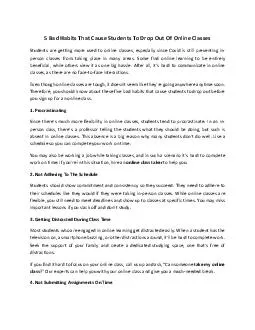PPT-Good Room/Bad Room Take out a clean sheet of paper. Title it “Good Room, Bad Room”
Author : aaron | Published Date : 2018-03-19
Take EVERYTHING OFF YOUR DESK aside from the paper and something to write with Two Columns Good RoomBad Room Where do these symbolsimages come from The Puritans
Presentation Embed Code
Download Presentation
Download Presentation The PPT/PDF document "Good Room/Bad Room Take out a clean shee..." is the property of its rightful owner. Permission is granted to download and print the materials on this website for personal, non-commercial use only, and to display it on your personal computer provided you do not modify the materials and that you retain all copyright notices contained in the materials. By downloading content from our website, you accept the terms of this agreement.
Good Room/Bad Room Take out a clean sheet of paper. Title it “Good Room, Bad Room”: Transcript
Download Rules Of Document
"Good Room/Bad Room Take out a clean sheet of paper. Title it “Good Room, Bad Room”"The content belongs to its owner. You may download and print it for personal use, without modification, and keep all copyright notices. By downloading, you agree to these terms.
Related Documents














